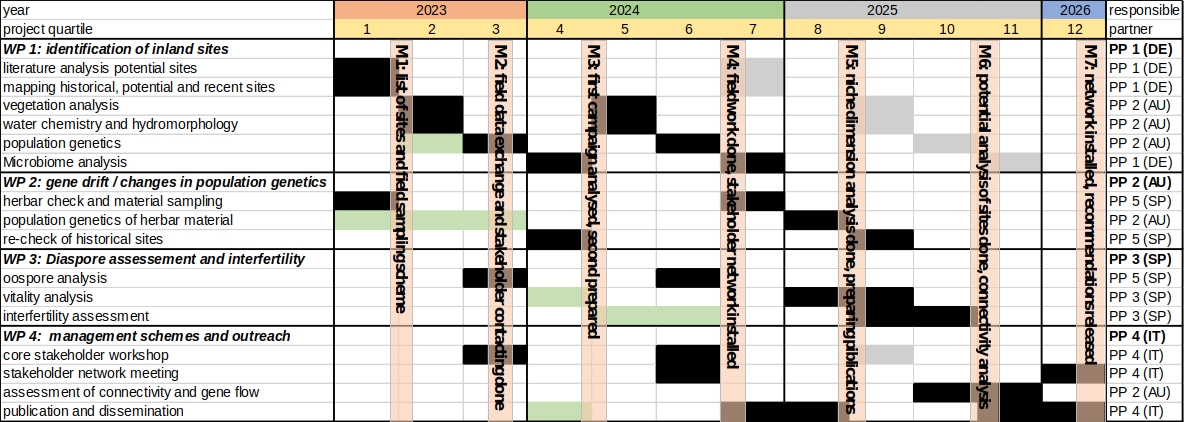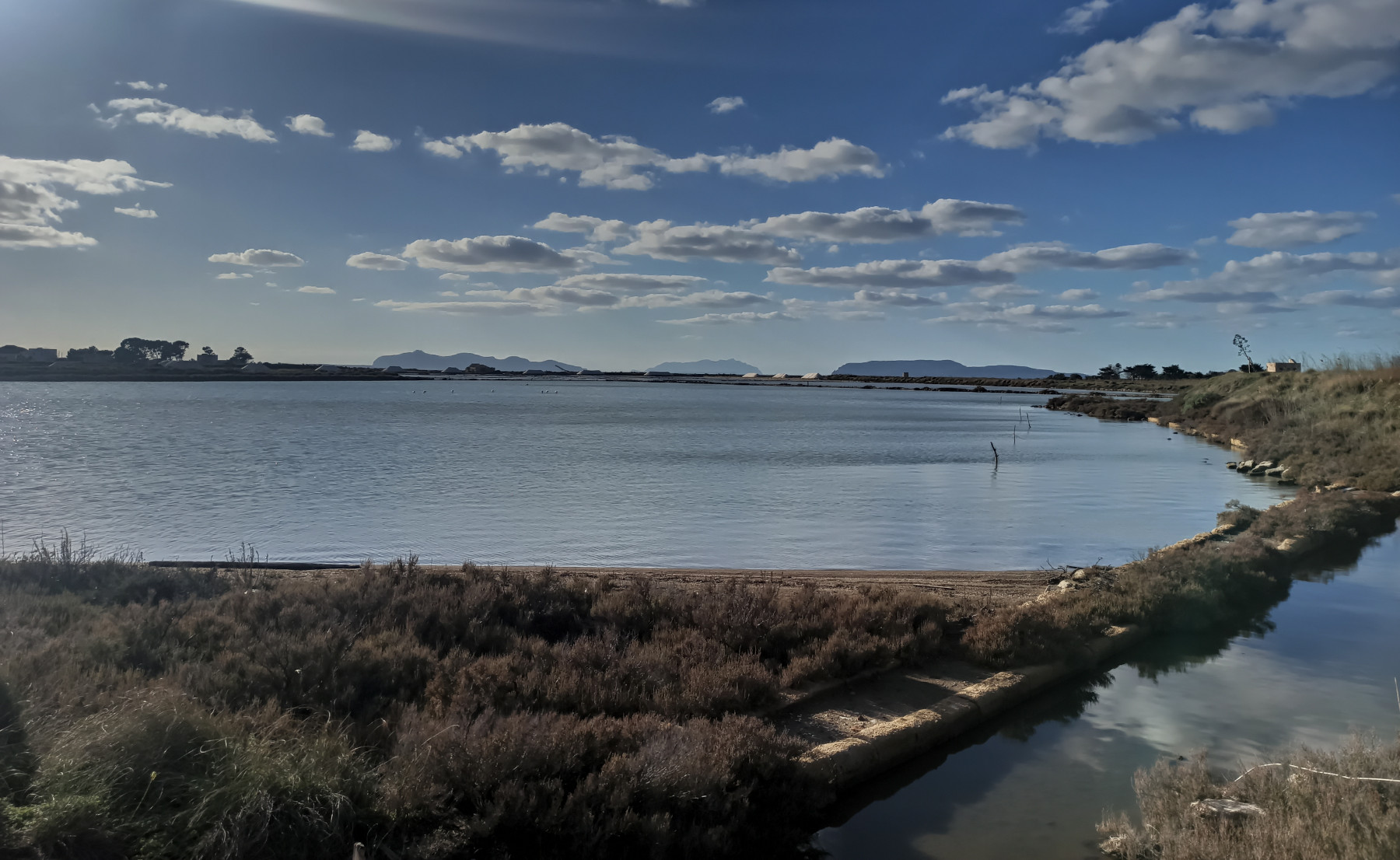

Image by Adriana Arnal - Trapani, Sicily
A conservation strategy for species consisting of extremely rare sexual reproducing populations and frequent parthenogenetic strains evolving from them will be developed. The target species for this model approach is Chara canescens, a species almost exclusively growing in Europe and along the Mediterranean Coast of Africa.
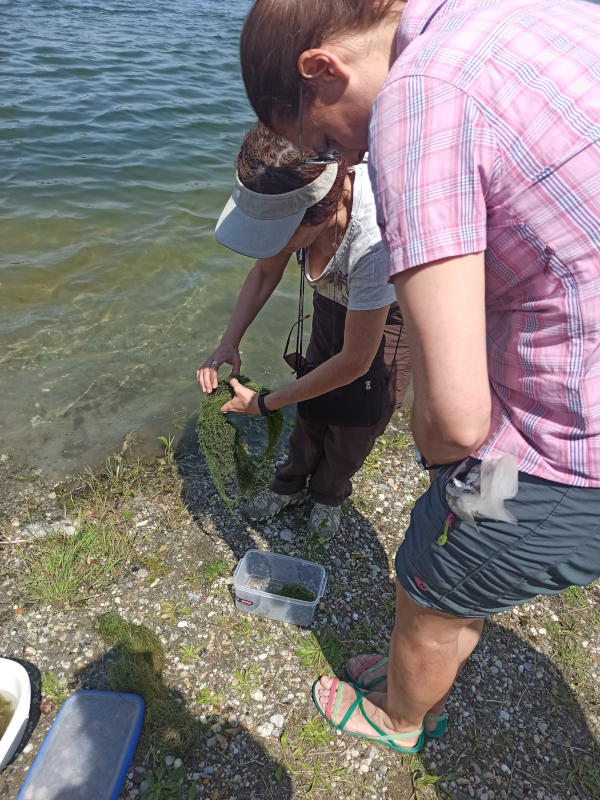
Chara canescens sampling in the Neusiedler See
Seewinkel National Park (Austria) by Maria Rodrigo and Barbara Turner (ph. Adriana Arnal)
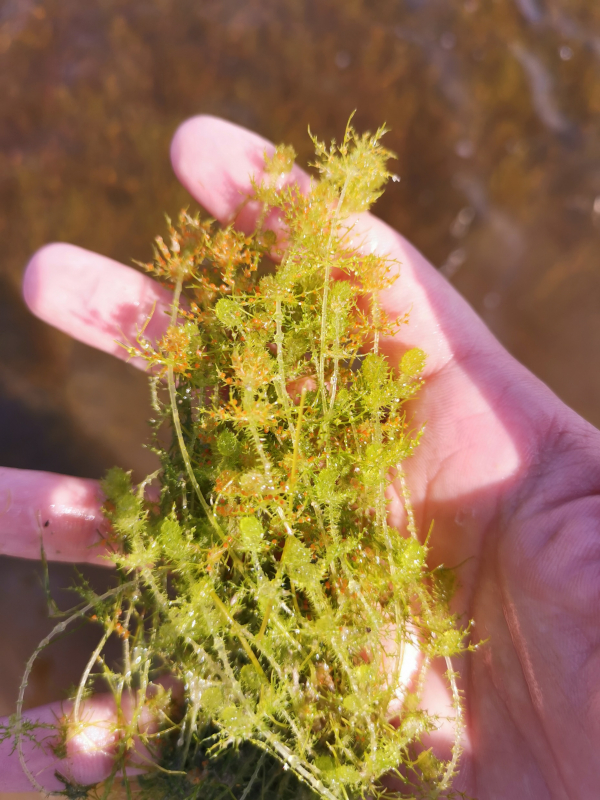
Mature male individual of Chara canescens from the Neusiedler See
Seewinkel National Park (Austria) (ph. Julien Bohm)
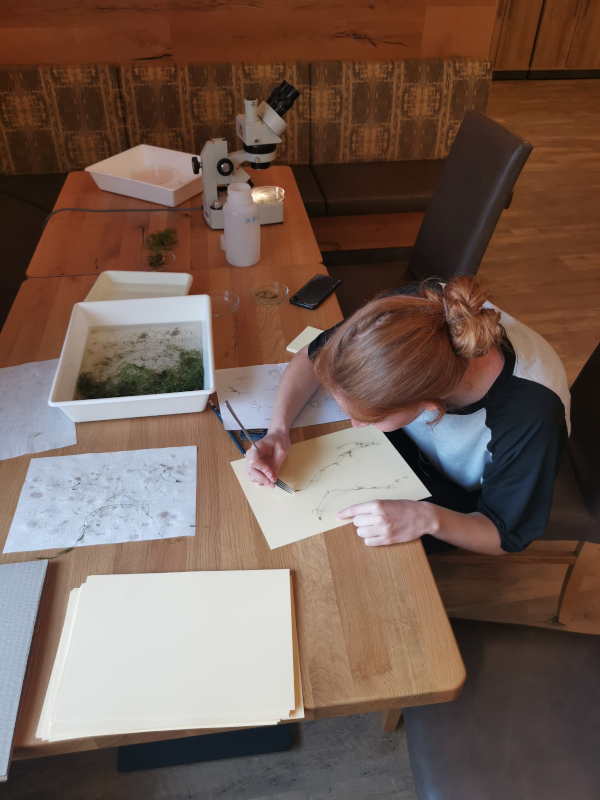
Preparation of an herbarium specimen from the collected Chara samples
(ph. Julien Bohm)
The loss of genetic diversity is considered a key element in entering the extinction vortex. Shrinking population size reduces the number of genetic variants available to cope with changes in habitat conditions. Together with other factors such as genetic drift, this loss progressively decreases the fitness of any given species.
This is especially true for asexually reproducing species, where recombination of traits is limited to the genetic variability of a single parent. The conservation of genetic diversity is thus a central element of conservation concepts.
In species where asexual and sexual populations occur, it is important to assess genetic diversity and genetic structure to identify priority conservation areas.
In this project, Chara canescens, a stonewort alga, is studied. This species has mostly asexually reproducing populations, but also a few sexually reproducing populations. The asexual populations are widespread and found throughout Europe, with populations also known from North America, Australia and Central Asia.
The sexual populations are very rare and scattered, with only 5 sites currently known, all of them in Europe.
Chara canescens is the only true brackish water species (i.e. unable to grow under freshwater as well as marine conditions) in its genus.
Parthenogenetic populations occur in brackish habitats in coastal lagoons and ponds, both permanent and temporary; sexual reproducing populations are restricted to European inland brackish water sites.
Previous projects have shown that the asexual populations of Chara canescens have a higher genetic diversity than assumed. These results have led to the establishment of the following hypothesis: “Species consisting of linked sexual and asexual populations can overcome the risk of loss of genetic diversity as long as efficient transfer of genotypes between populations is ensured”. So far, little is known about the connections between sexual and asexual lineages of a species.
All this together is the basis for the present project, which aims to clarify the extent to which populations from different regions and with different reproductive strategies are connected or whether genetic exchange takes place.
In order for an exchange and thus a coherent network of populations to be possible, stepping stone biotopes between the populations are necessary.
In these biotopes, the charophyte populations must be kept fit and lost stepping stone biotopes as well as former sites of sexually reproducing populations might still contain diaspores banks that can be revitalised to increase stability under climate change conditions.
In the framework of this project, we will gather the knowledge necessary for the development of transnational conservation strategies. Based on this, we will establish a network for the sustainable conservation of a species composed of extremely rare bisexual and common parthenogenetic populations. For this, field work at recent sites as well as analysis of herbarium material will be carried out to unravel recent and past gene flow within and between populations.
The key activities will be:
- to identify former and recent inland brackish water sites suitable for sexually and parthenogenetically reproducing populations;
- to gain knowledge on recent and past genetic diversity of the target species;
- to evaluate the potential of a few sexual populations in sustaining the genetic diversity of the widespread parthenogenetic populations.
